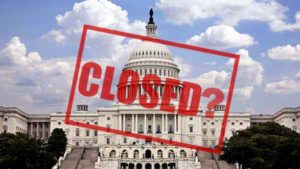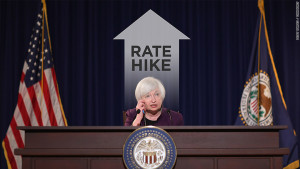 Here are the real facts on foreign oil, the U.S. debt, and buying American.
Here are the real facts on foreign oil, the U.S. debt, and buying American.
At a conference in Philadelphia recently, a Wharton professor noted that one of the country’s biggest economic problems is a tsunami of misinformation. You can’t have a rational debate when facts are so easily supplanted by overreaching statements, broad generalizations, and misconceptions. And if you can’t have a rational debate, how does anything important get done? As author William Feather once advised, “Beware of the person who can’t be bothered by details.” There seems to be no shortage of those people lately.
Here are three misconceptions that need to be put to rest.
Misconception: Most of what Americans spend their money on is made in China.
Fact: Just 2.7% of personal consumption expenditures go to Chinese-made goods and services. 88.5% of U.S. consumer spending is on American-made goods and services.
I used that statistic in an article last week, and the response from readers was overwhelming: Hogwash. People just didn’t believe it.
The figure comes from a Federal Reserve report. You can read it here.
A common rebuttal I got was, “How can it only be 2.7% when almost everything in Wal-Mart (WMT) is made in China?” Because Wal-Mart’s $260 billion in U.S. revenue isn’t exactly reflective of America’s $14.5 trillion economy. Wal-Mart might sell a broad range of knickknacks, many of which are made in China, but the vast majority of what Americans spend their money on is not knickknacks.
The Bureau of Labor Statistics closely tracks how an average American spends their money in an annual report called the Consumer Expenditure Survey. In 2010, the average American spent 34% of their income on housing, 13% on food, 11% on insurance and pensions, 7% on health care, and 2% on education. Those categories alone make up nearly 70% of total spending, and are comprised almost entirely of American-made goods and services (only 7% of food is imported, according to the USDA).
Even when looking at physical goods alone, Chinese imports still account for just a small fraction of U.S. spending. Just 6.4% of nondurable goods — things like food, clothing and toys — purchased in the U.S. are made in China; 76.2% are made in America. For durable goods — things like cars and furniture — 12% are made in China; 66.6% are made in America.
Another way to grasp the value of Chinese-made goods is to look at imports. The U.S. is on track to import $340 billion worth of goods from China this year, which is 2.3% of our $14.5 trillion economy. Is that a lot? Yes. Is it most of what we spend our money on? Not by a long shot.
Part of the misconception is likely driven by the notion that America’s manufacturing base has been in steep decline. The truth, surprising to many, is that real manufacturing output today is near an all-time high. What’s dropped precipitously in recent decades is manufacturing employment. Technology and automation has allowed American manufacturers to build more stuff with far fewer workers than in the past. One good example: In 1950, aU.S. Steel (X) plant in Gary, Ind., produced 6 million tons of steel with 30,000 workers. Today, it produces 7.5 million tons with 5,000 workers. Output has gone up; employment has dropped like a rock.
Misconception: We owe most of our debt to China.
Fact: China owns 7.8% of U.S. government debt outstanding.
As of August, China owned $1.14 trillion of Treasuries. Government debt stood at $14.6 trillion that month. That’s 7.8%.
Who owns the rest? The largest holder of U.S. debt is the federal government itself. Various government trust funds like the Social Security trust fund own about $4.4 trillion worth of Treasury securities. The Federal Reserve owns another $1.6 trillion. Both are unique owners: Interest paid on debt held by federal trust funds is used to cover a portion of federal spending, and the vast majority of interest earned by the Federal Reserve is remitted back to the U.S. Treasury.
The rest of our debt is owned by state and local governments ($700 billion), private domestic investors ($3.1 trillion), and other non-Chinese foreign investors ($3.5 trillion).
Does China own a lot of our debt? Yes, but it’s a qualified yes. Of all Treasury debt held by foreigners, China is indeed the largest owner ($1.14 trillion), followed by Japan ($937 billion) and the U.K. ($397 billion).
Right there, you can see that Japan and the U.K. combined own more U.S. debt than China. Now, how many times have you heard someone say that we borrow an inordinate amount of money from Japan and the U.K.? I never have. But how often do you hear some version of the “China is our banker” line? Too often, I’d say.
Misconception: We get most of our oil from the Middle East.
Fact: Just 9.2% of oil consumed in the U.S. comes from the Middle East.
According the U.S. Energy Information Administration, the U.S. consumes 19.2 million barrels of petroleum products per day. Of that amount, a net 49% is produced domestically. The rest is imported.
Where is it imported from? Only a small fraction comes from the Middle East, and that fraction has been declining in recent years. So far this year, imports from the Persian Gulf region — which includes Bahrain, Iran, Iraq, Kuwait, Qatar, Saudi Arabia, and the United Arab Emirates — have made up 9.2% of total petroleum supplied to the U.S. In 2001, that number was 14.1%.
The U.S. imports more than twice as much petroleum from Canada and Mexico than it does from the Middle East. Add in the share produced domestically, and the majority of petroleum consumed in the U.S. comes from North America.
This isn’t to belittle our energy situation. The nation still relies on imports for about half of its oil. That’s bad. But should the Middle East get the attention it does when we talk about oil reliance? In terms of security and geopolitical stability, perhaps. In terms of volume, probably not.
A roomful of skeptics
“People will generally accept facts as truth only if the facts agree with what they already believe,” said Andy Rooney. Do these numbers fit with what you already believed? No hard feelings if they don’t. Just let me know why in the comment section below.






